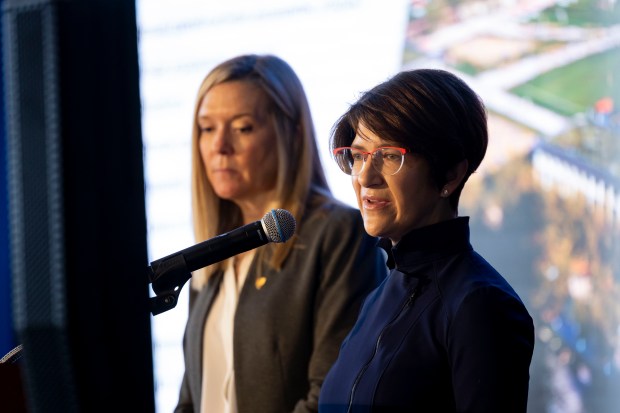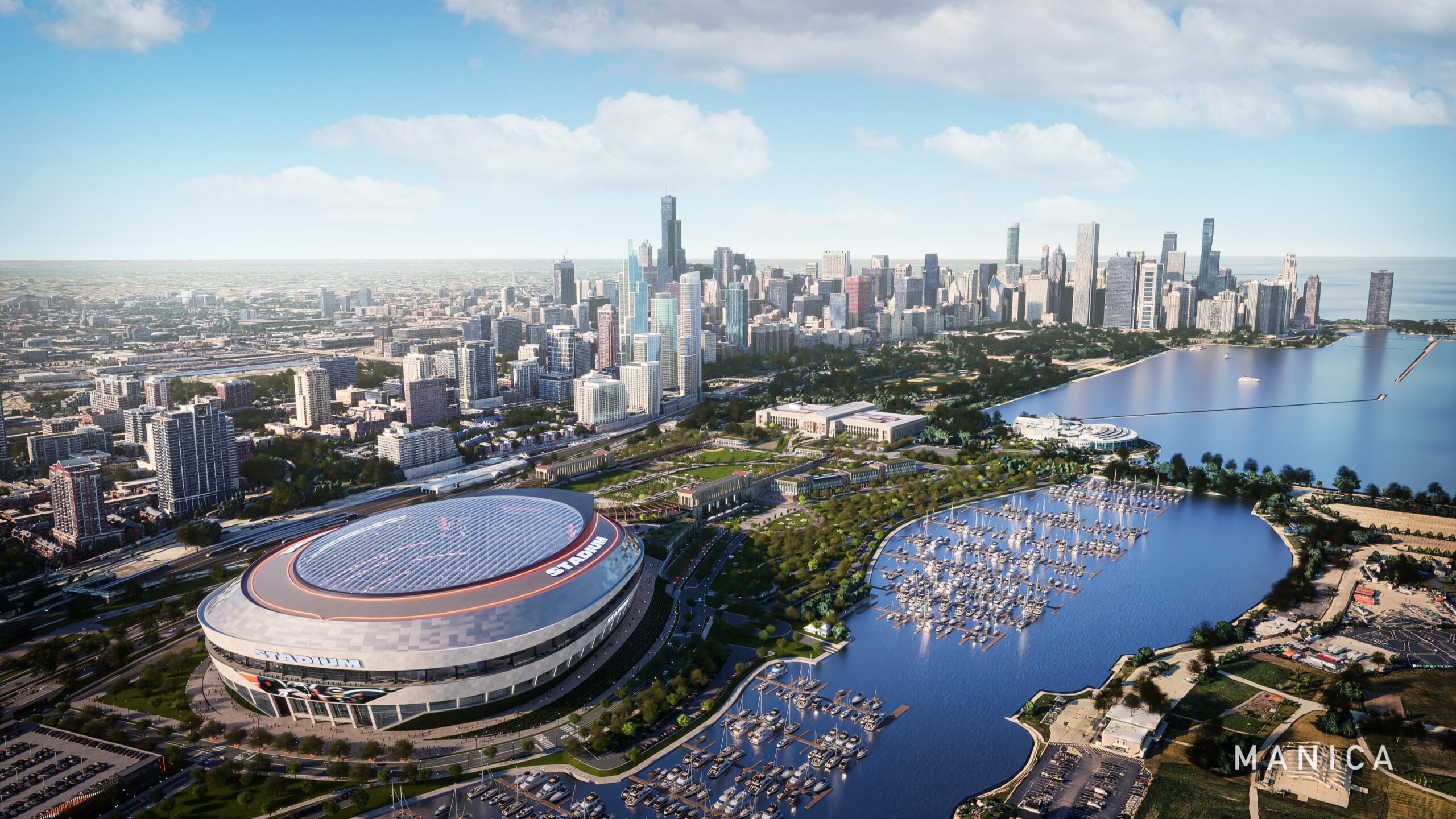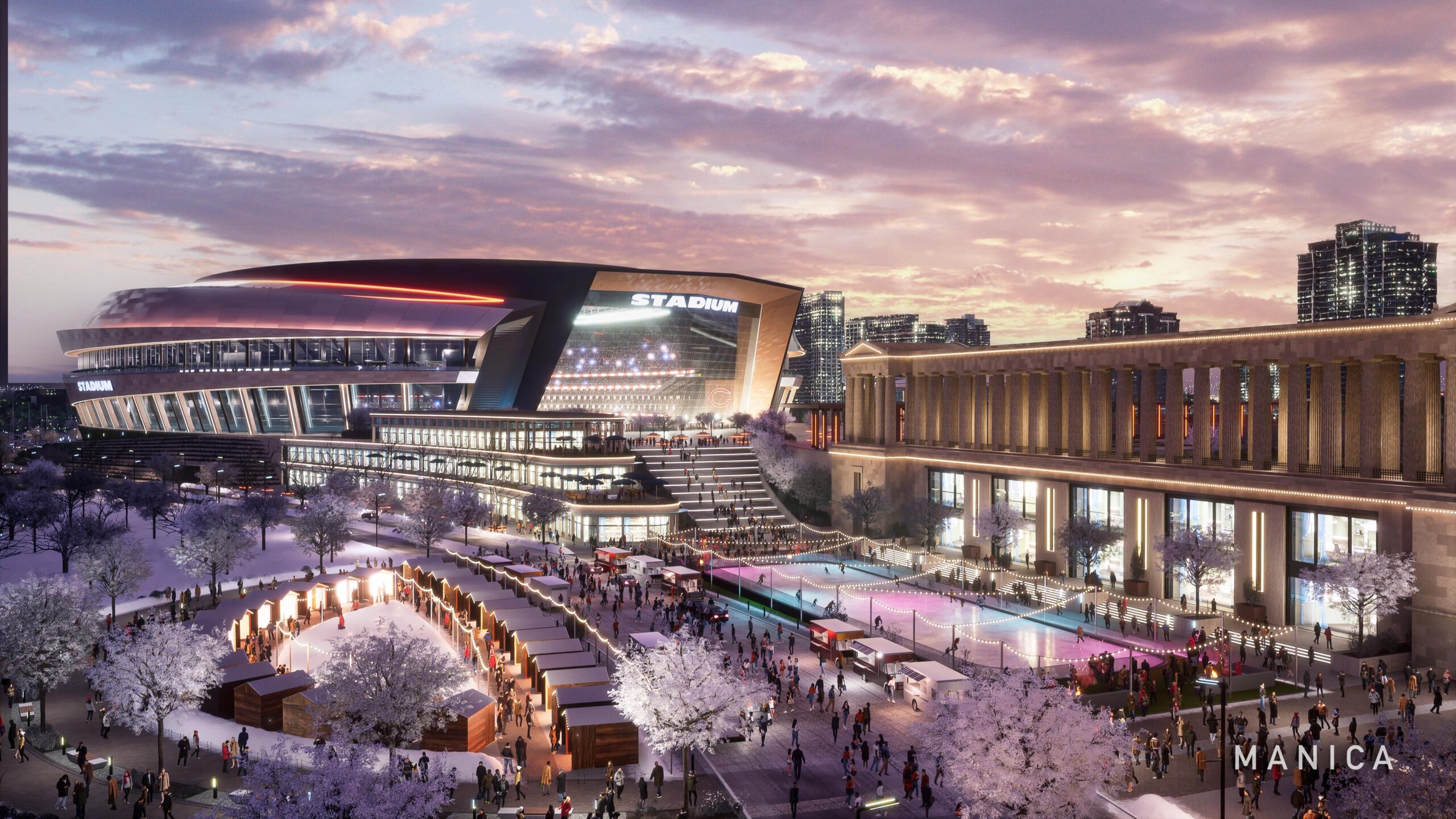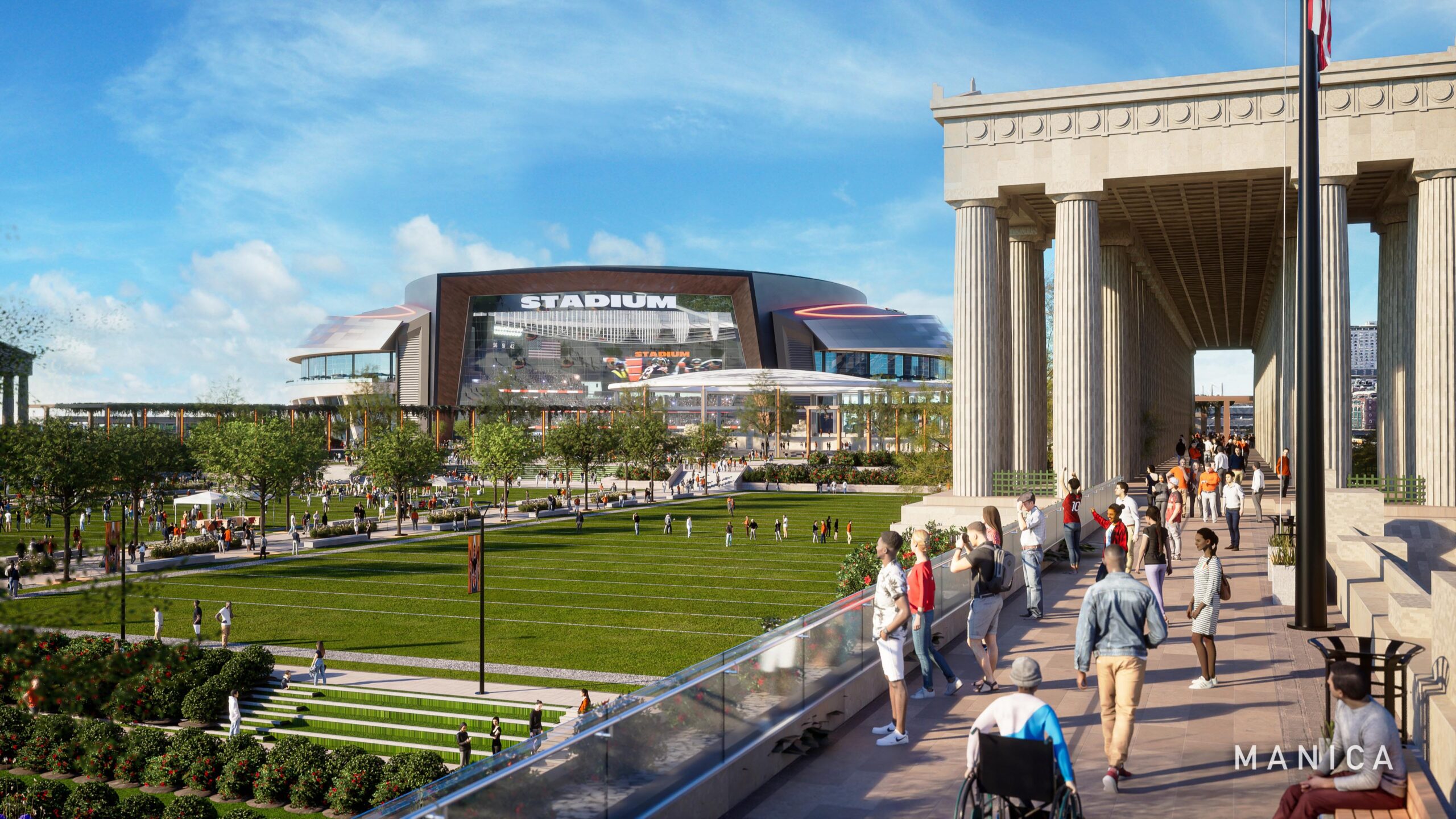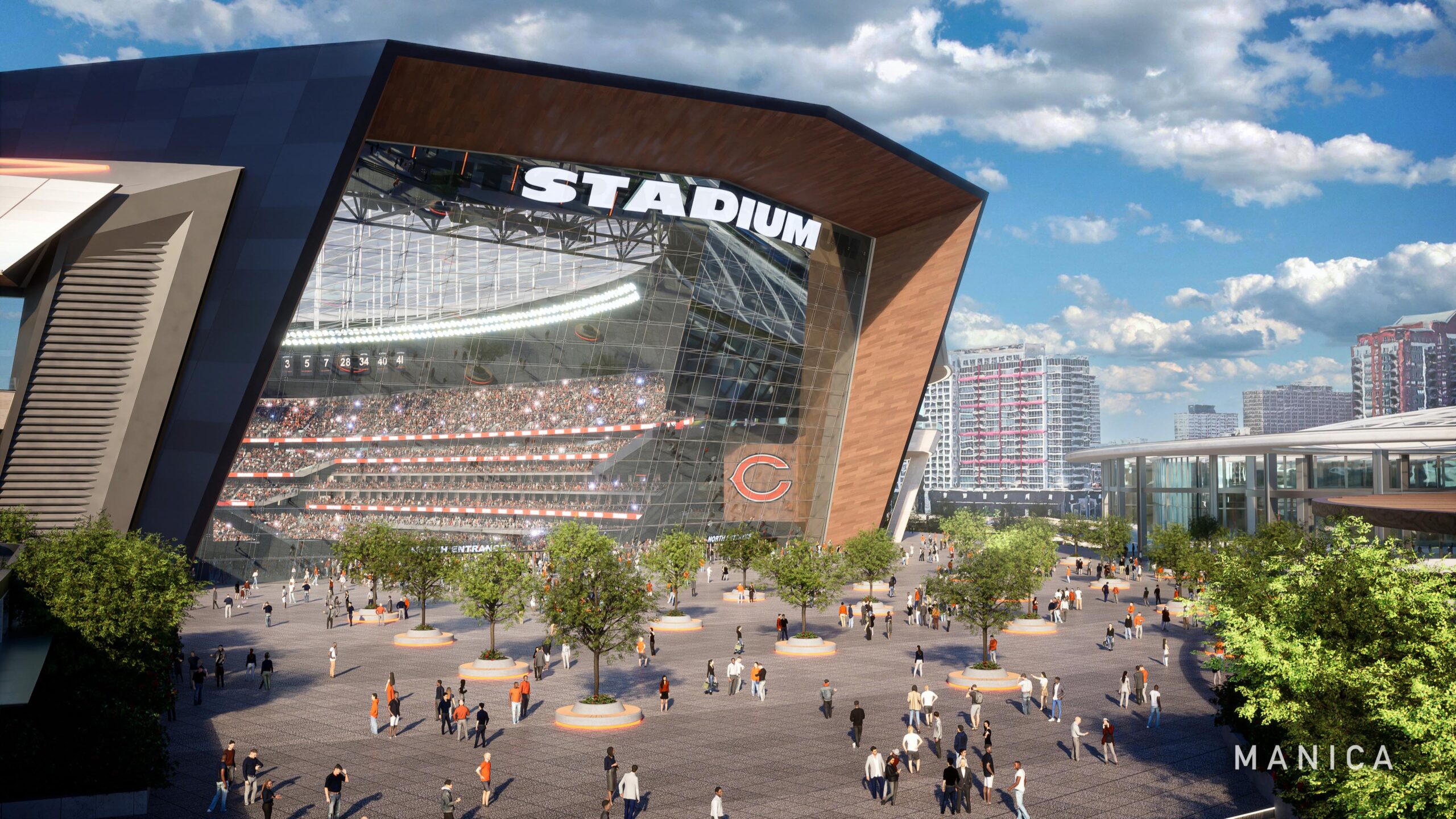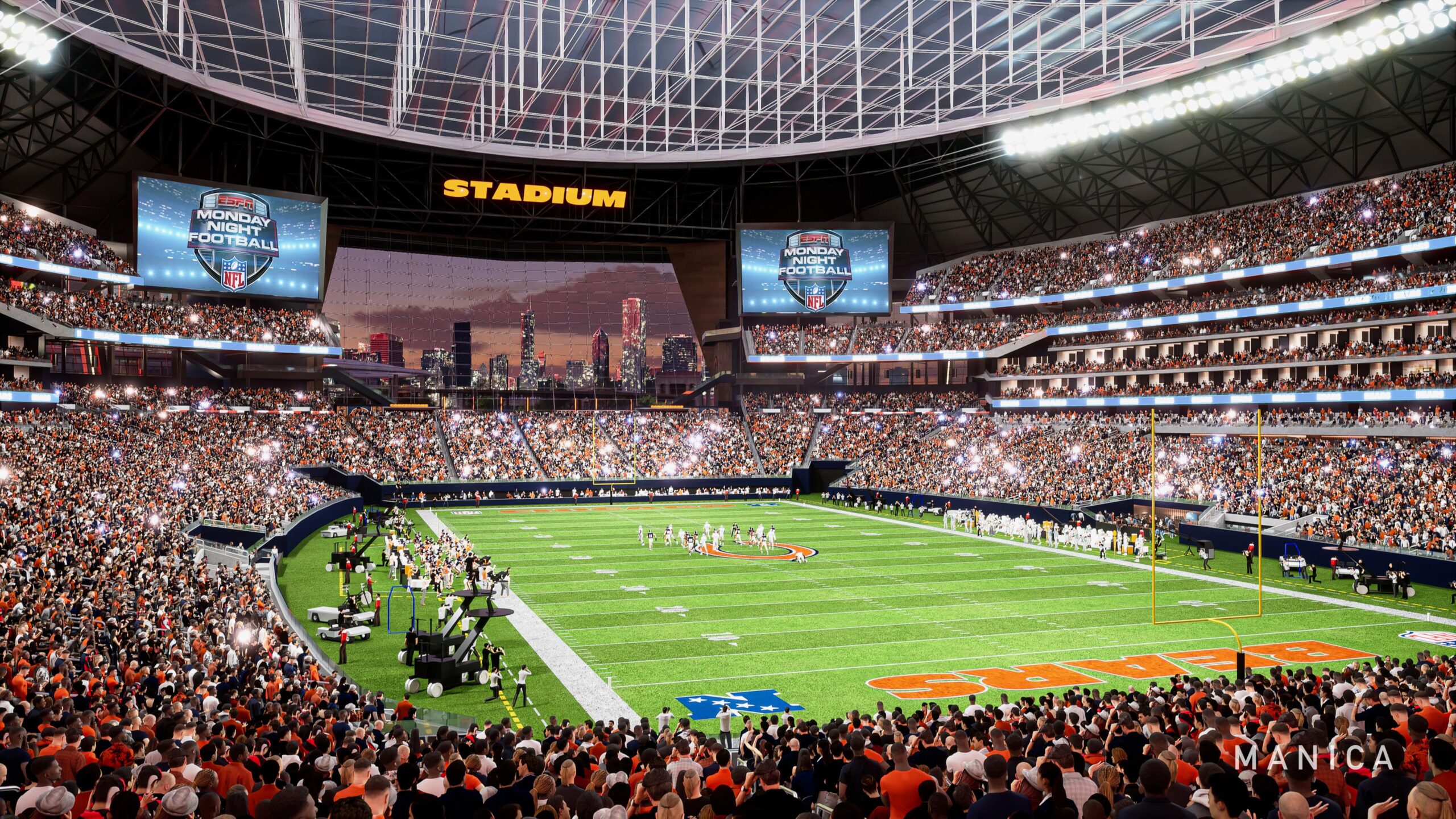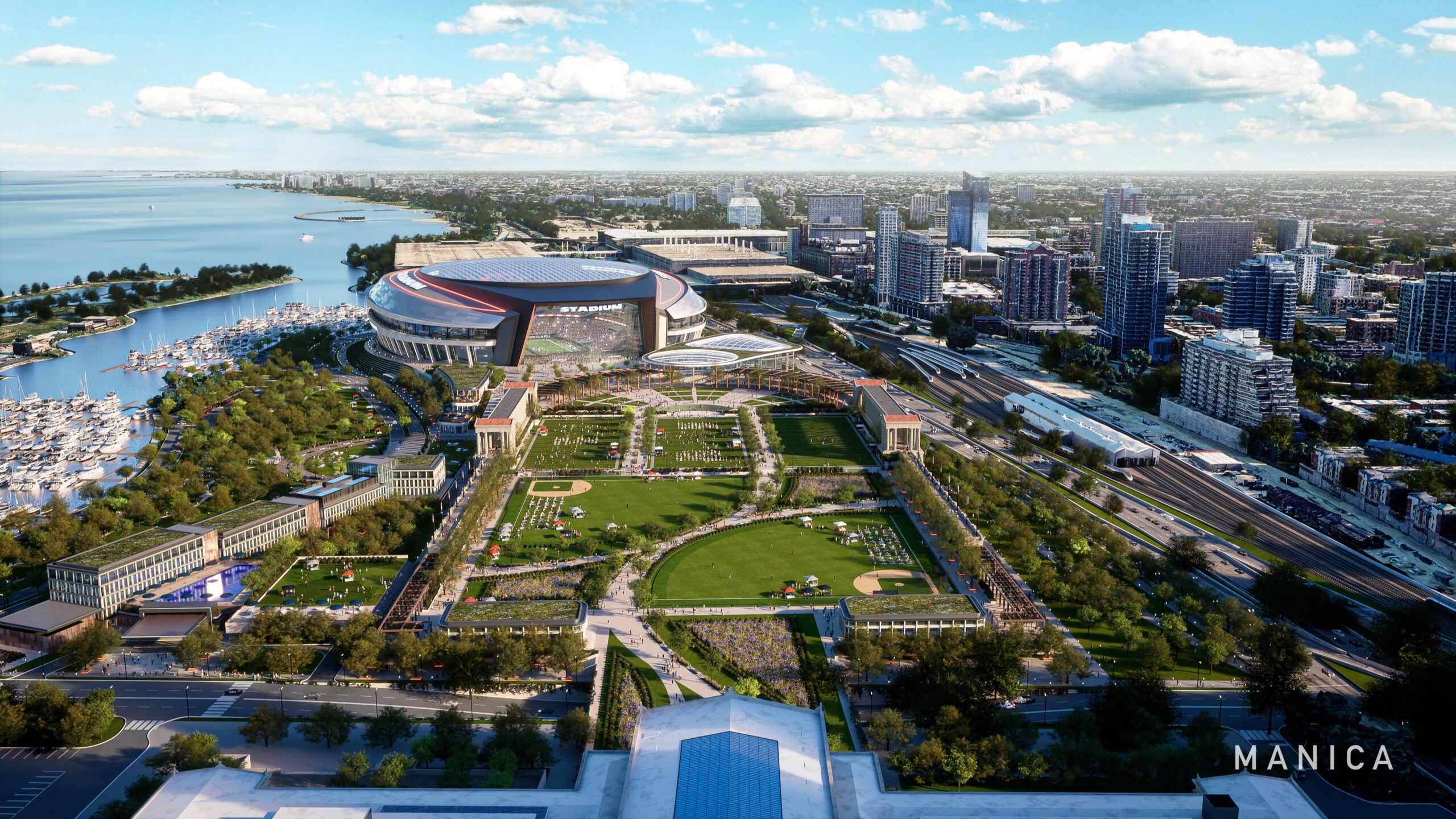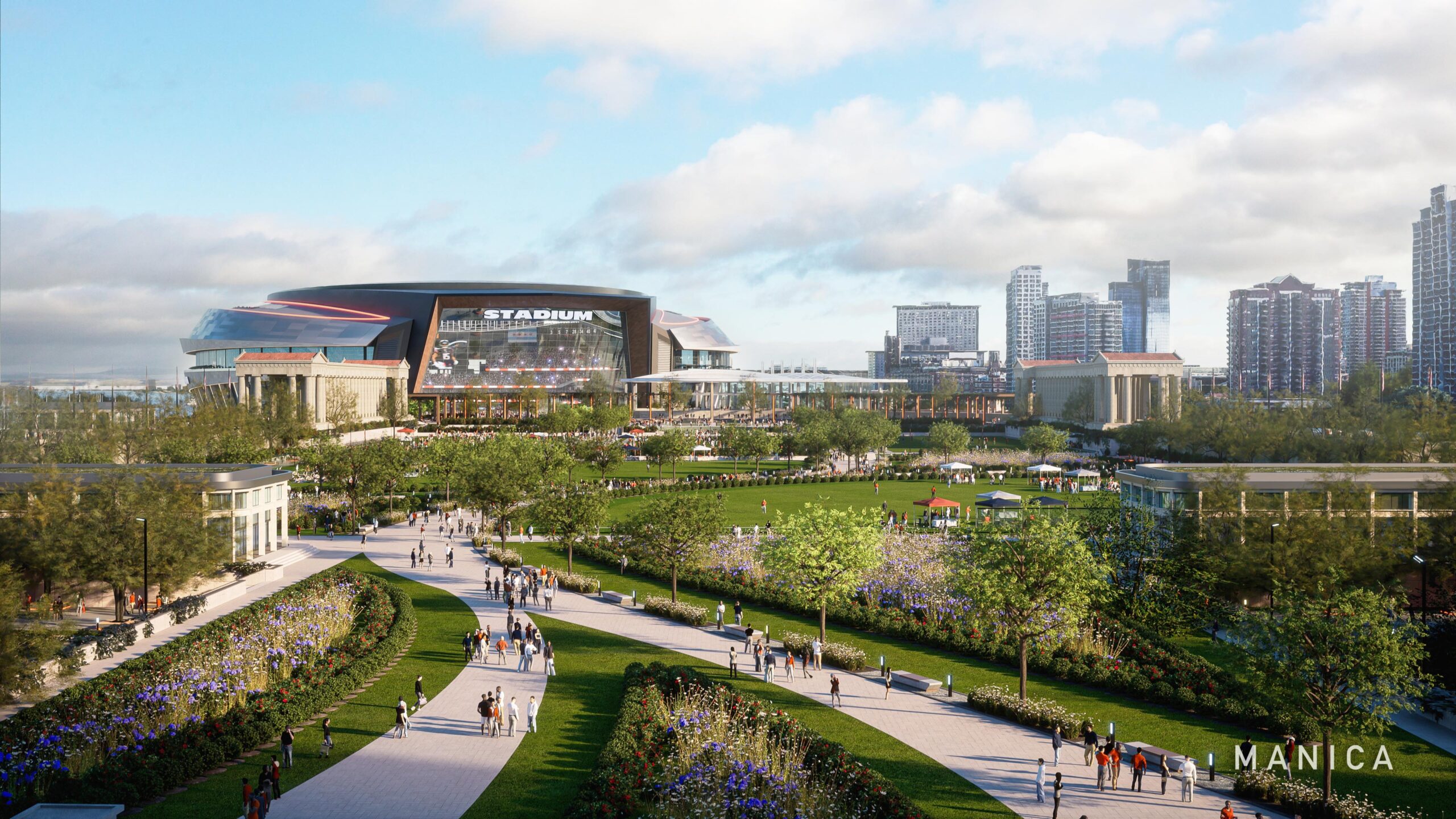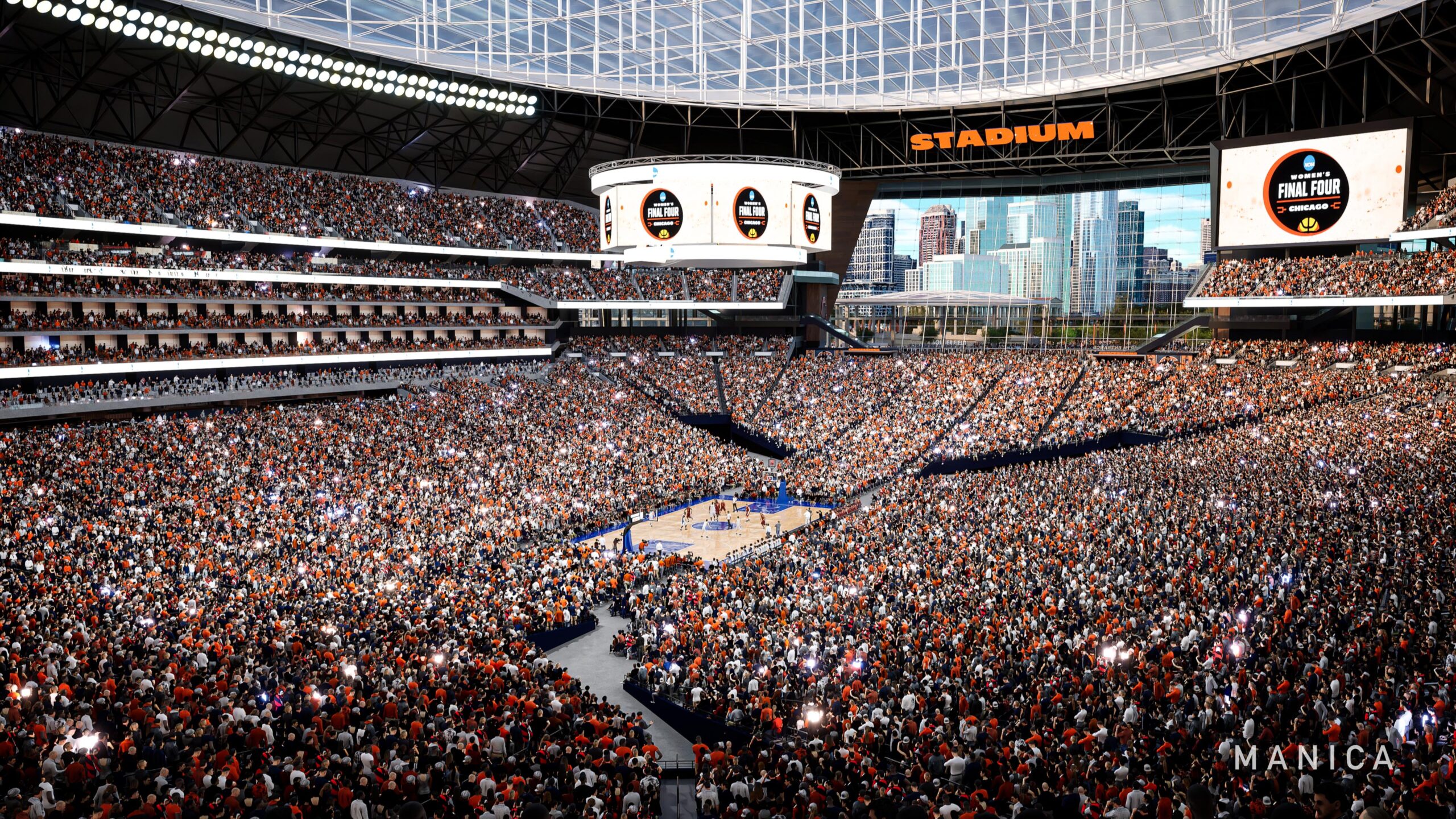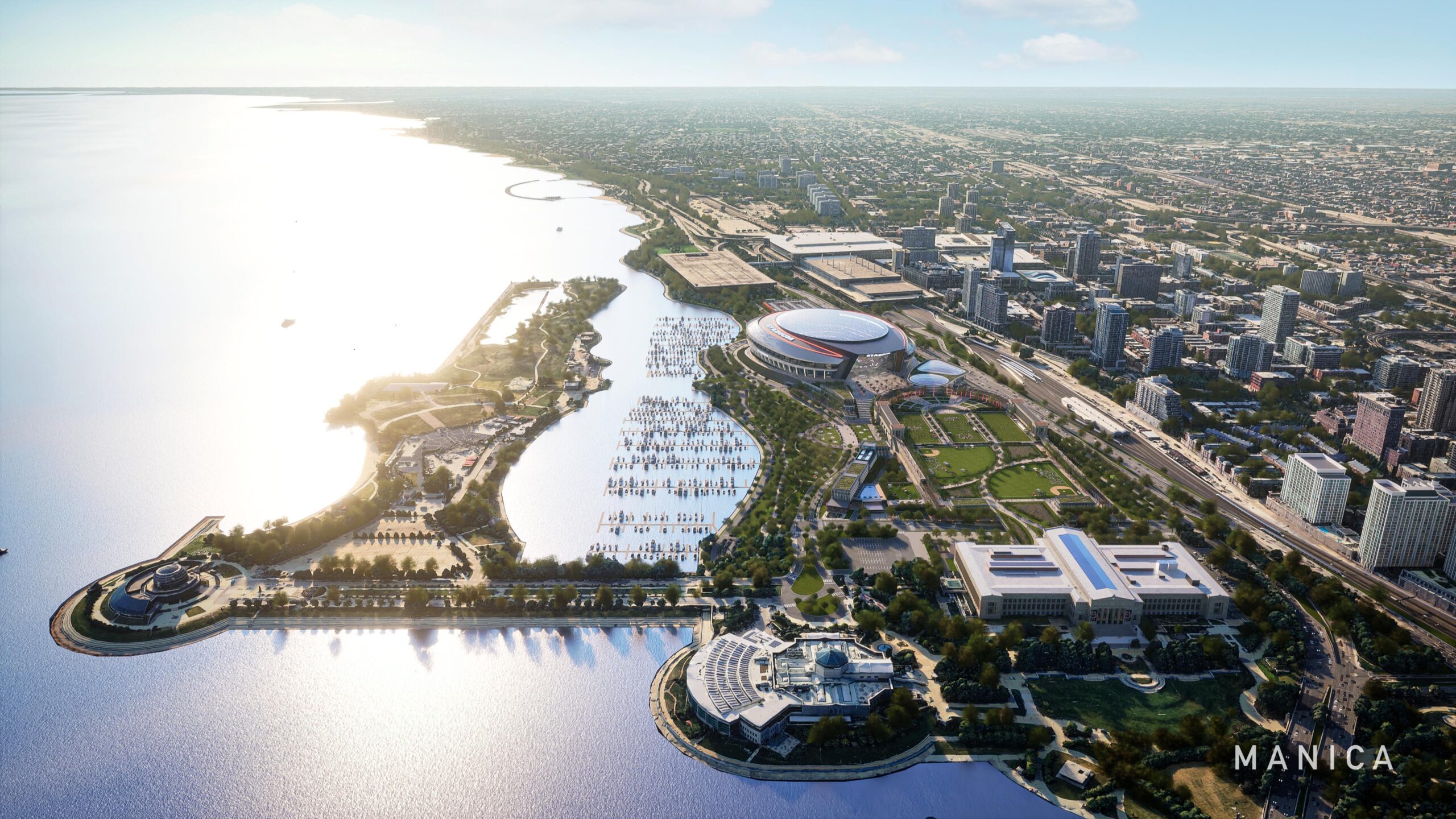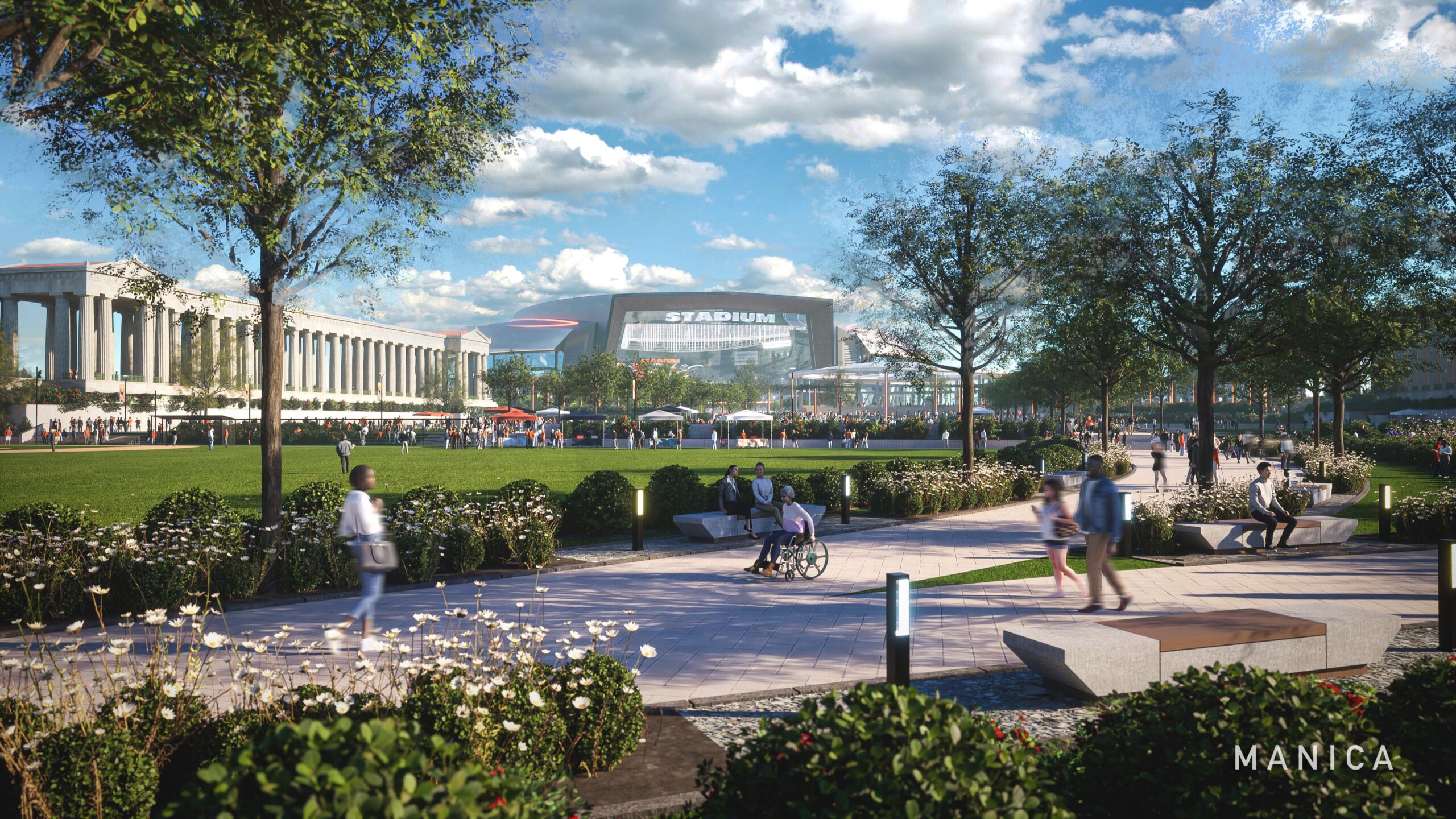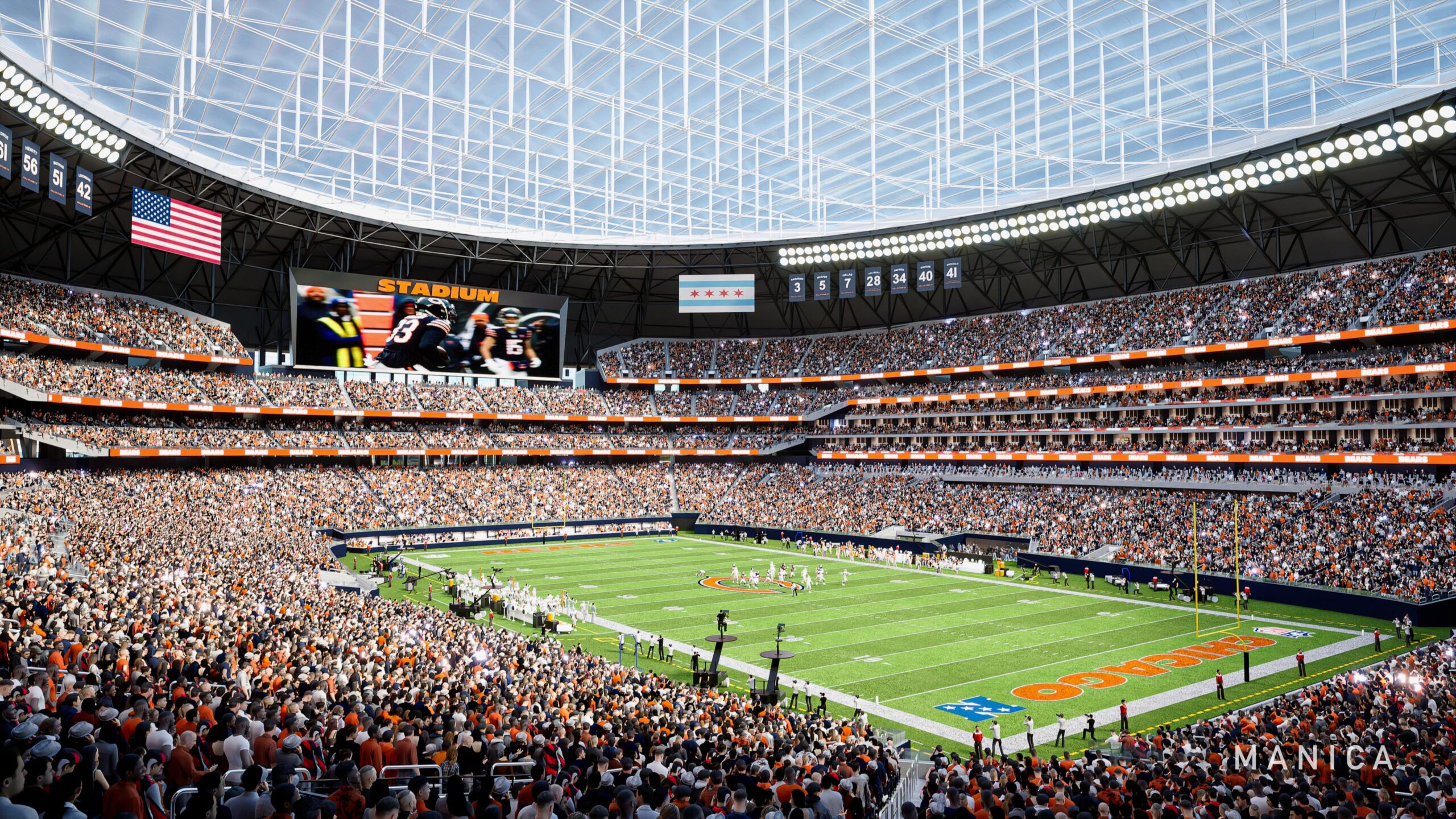A billion here, a billion there — pretty soon you’re talking real money. The late Sen. Everett Dirksen may not have said exactly that, but he repeatedly raised that concern about spending tax dollars.
For reference, $1 billion is more than the budgets of the Chicago Park District, Cook County Forest Preserves and Greater Chicago Food Depository combined. Annual spending for Chicago police is about $2 billion, while Chicago Public Schools’ budget exceeds $9 billion.
Now, Illinois politicians are faced with the Chicago Bears’ request to build a new, publicly owned $3.2 billion enclosed stadium on Chicago’s lakefront. The state’s top leaders expressed reluctance, but Chicago Mayor Brandon Johnson is all in.
So what exactly is proposed, what else is at stake, and how will this play out? Here are a few highlights.
What is proposed
Bears President and CEO Kevin Warren envisions a stadium just south of the Bears’ current home at Soldier Field, on the site of what is now a parking lot. The facility would seat about 65,000 for football, with standing room up to 70,000, and a capacity of 77,000 for basketball.
The structure would have a fixed, translucent roof, and a glass wall on the north end to take in the skyline. Unlike Soldier Field, it could hold events year-round, including concerts, soccer, college basketball playoffs, or, once in a great while, the Super Bowl.
Soldier Field would be torn down, but its colonnades would be saved and 14 acres of athletic fields and open space added in between and to the north of the colonnades, for use by local sports teams, graduations and other events. If approved this year, the stadium would open in 2028.
A little context
The stadium would be designed by Manica architects, which designed Allegiant Stadium in Las Vegas. That stadium, referenced by the Bears in their presentation, also has a translucent roof, and opened in 2020 at a cost of $1.9 billion, with $750 million from taxpayers.
What it could cost
The Bears say they would pay $2 billion, a huge private investment, plus $300 million requested from the NFL. The rest of the $3.2 billion cost of the stadium alone would be paid with $900 million from the state. The team said another $325 million would be needed for infrastructure, including improved road access and utilities as part of up to $1.5 billion for full build-out with extras like a hotel.
The public money would be borrowed through bonds issued by the Illinois Sports Facilities Authority, or ISFA, which previously financed construction of Guaranteed Rate Field, where the White Sox play, and the 2003 renovation of Soldier Field. The bonds are to be repaid over 40 years by the city’s 2% hotel tax.
Some context
The first problem is, the hotel tax has not been enough to repay even the past work on Sox park and Soldier Field. The state still owes about $430 million for that, which would have to be refinanced, with interest totaling $1.3 billion, ISFA calculates.
Borrowing $900 million in new spending would add an additional $2.6 billion in interest, plus a $160 million reserve, which would earn interest, for a total stadium cost nearing $4.8 billion.
That’s not counting the $1.5 billion in infrastructure costs, or the $1 billion already paid for both existing stadiums.
The Bears say that’s an unfair way to look at it. Home mortgages often cost twice the value of a house, but nobody cites the interest cost as part of the sales price. To be consistent, the team’s investment, to be paid by equity and debt, would also have to be figured with interest.
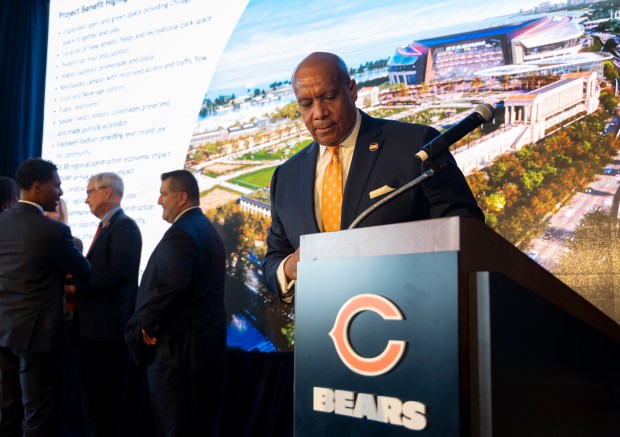
Unanswered
How the state would pay for the $1.5 billion in infrastructure. Officials proposed using federal and state grants, but how much they could get is unknown.
What reaction the Bears are getting
State lawmakers would have to approve such a deal to make it happen, but the leadership is against it.
Gov. J.B. Pritzker called the Bears’ proposal a “non-starter.”
“I didn’t say that there’s not ever the possibility of having a domed stadium in Chicago, I’ve never said that,” the governor said recently. “I have said, however, that it’s not a high priority for the taxpayers and, very importantly, it’s got to be a good deal for taxpayers. So, there’s a lot of questions about whether the deal could get done.”
House Speaker Emanuel “Chris” Welch and state Senate President Don Harmon both said the chances of passage are low.
In contrast, the state just announced that Rivian would make a $1.5 billion investment in its electric vehicle plant in Normal, with a 30-year $827 million incentive package from the state, mostly from tax credits.
The not-for-profit Friends of the Parks issued a statement questioning the rush for a new stadium on the lake, saying it could be built elsewhere, and raising numerous issues, such as: “Does it seem reasonable that the Chicago Bears should get their wants satisfied immediately while poor neighborhoods suffer from benign neglect?”
The group failed when it challenged the renovation of Soldier Field, but successfully fought off filmmaker George Lucas’ proposal for a museum on the same site.
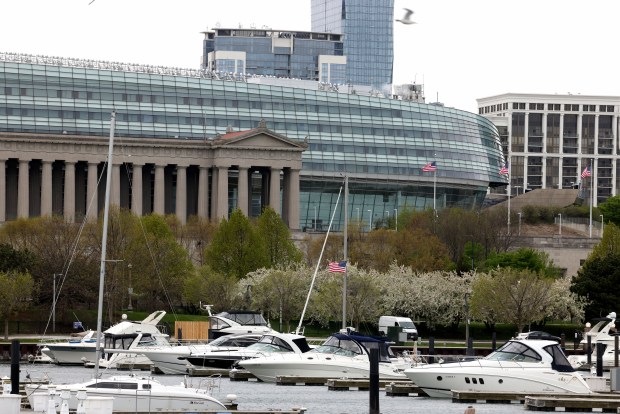
What are the economic impacts
Warren says the public money is not a donation, but an investment.
The Bears project $8 billion in regional economic impacts during construction, with 43,000 job-years. Once operational, the team projects 4,000 permanent jobs, generating $450 million in annual regional impact, though only about 25% of that would be new.
Economists often are skeptical of such estimates, saying that officials must consider how else they could spend money to promote public benefit and productivity.
What’s unknown
The Bears have not specified what they would expect in return for their investment. Pritzker has said the Bears are asking for revenues from other events at the stadium, including from tickets, concessions and parking. That could cut into a major revenue source for the landlord, the Chicago Park District, which is budgeted to make $54 million from Soldier Field in 2024.
What happens if this doesn’t fly?
Just last year, the Bears paid $197 million to buy the former Arlington Park racecourse. Similar to its presentation for a Chicago stadium, the team proposed building a $2 billion domed stadium in Arlington Heights, while saying it would need unspecified public help for infrastructure. The major difference was that the suburban stadium would be surrounded by a $5 billion mixed-use development, with housing, hotels and entertainment, that would generate significant revenues and taxes.
That project stalled after the team could not agree with local school districts on property taxes, though they were apart only a few million dollars — a pittance compared with the overall costs. Warren said that plan is now off the table while the team pursues Chicago, but noted that the Bears remain the largest property owner in Arlington Heights.
Village officials are biding their time, saying they think the Bears will be back. Mayor Tom Hayes said “we are ready, willing and able,” if the Bears want to turn again to the suburbs.


